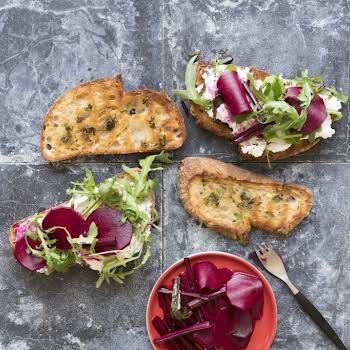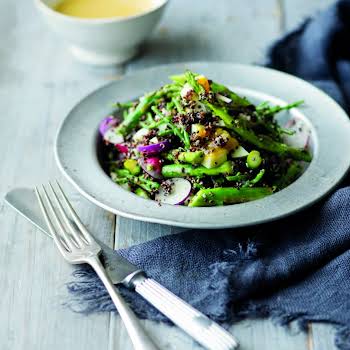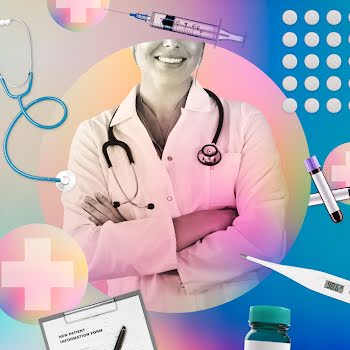
How the pandemic created the perfect storm for women when it comes to this silent killer
By Amanda Cassidy
31st Oct 2020
31st Oct 2020
Brain aneurysms are sometimes called the silent killer because very often you don’t know you have one until it is too late. Now, medics have warned that the pressure of the ongoing pandemic has created the perfect storm for women over 40 when it comes to blood pressure disorders. As we mark World Stroke day, Amanda Cassidy speaks to a GP, a consultant Neuro-Radiologist, and the creator of the contour neurovascular system, a treatment for brain aneurysms.
Emilia Clarke calls it the battle of her life.
The Game of Thrones actress suffered two brain aneurysms as she filmed the hit series. “I had just finished filming Season 1 of “Game of Thrones.” Then I was struck with the first of two aneurysms.” In a searingly honest essay for The Newyorker, the star, who plays Daenerys Targaryen, described how she first became ill while working out with her trainer.
In my worst moments, I wanted to pull the plug
“The diagnosis was quick and ominous: a subarachnoid hemorrhage (SAH), a life-threatening type of stroke, caused by bleeding into the space surrounding the brain. I’d had an aneurysm, an arterial rupture. As I later learned, about a third of SAH patients die immediately or soon thereafter.
For the patients who do survive, urgent treatment is required to seal off the aneurysm, as there is a very high risk of a second, often fatal bleed. If I was to live and avoid terrible deficits, I would have to have urgent surgery. And, even then, there were no guarantees.”

Taking stock
“In my worst moments, I wanted to pull the plug. I asked the medical staff to let me die. My job—my entire dream of what my life would be—centered on language, on communication. Without that, I was lost.”
The actress went on to make a full recovery, but not everyone is so lucky. In fact, GP Elenor Galvin says that women, in particular, can often ignore the warning signs that may present themselves, passing them off as symptoms of other less dangerous illnesses.
“As a woman in her mid 40’s and a medical practitioner in my predominantly female patient surgery, I am only too aware of how important it is to be aware of the signs of a brain aneurysm. In the current environment, we as women and very often mothers, are at an even greater risk of putting our own health and wellbeing behind everyone else’s.”
So what are the factors that put women at a higher risk of developing a brain aneurysm?
“Women over 40-years are 70% more likely to develop a brain aneurysm than men, due to lower oestrogen hormone levels after the menopause,” explains Galvin.

“Increased stress can cause increased blood pressure and puts you a greater risk of developing a brain aneurysm and stroke.
We may joke about Wine O’ Clock, but reports suggest that women in Ireland are drinking more regularly at home and have increased their alcohol in a bid to cope with the pressure of the pandemic. High alcohol consumption puts you at a greater risk of developing a brain aneurysm.
Women’s increased incidence of anxiety and depression as a result of the pandemic has caused an increase in unhealthy food choices and excess weight gain putting increased pressure on blood flow and therefore at greater risk of developing a brain aneurysm. The reduced ability to exercise during COVID restrictions have also prevented many from maintaining a healthy level of physical exercise.”
Perfect storm
Dr Stephen Griffin says the way aneurysms are now treated have also advanced; From Co. Tipperary and graduate of the University of Limerick, Dr Griffin moved to the US 20 years ago and has created a minimally invasive way of treating aneurysms.”
“Until the early ’90s, brain aneurysms were always treated by open brain surgery, which involved a very invasive surgical approach and sometimes quite a long rehabilitation and recovery. The procedure involved an open craniotomy. The biggest advancement in treating a brain aneurysm came in the early ’90s with the development of small platinum coils that were delivered through a small catheter and deposited inside the aneurysm to plug it from growing any bigger and popping.
This was the dawn of the minimally invasive neurovascular intervention procedure. A small puncture on the inside of the patient’s thigh versus an open craniotomy meant that patients could recover faster with fewer complications and risk of infection.”
Dr Alan O’Hare is a Consultant Neuro-Radiologist. He says he now uses this method, the contour neurovascular system when it comes to treating his patents at Beaumont hospital in Dublin.
“The recent arrival of the Contour device allows us to treat, in a quick, safe, and efficacious way aneurysms that would otherwise require open brain surgery or multiple repeat coiling treatments. This is due to the device design and the ability to occlude the neck of the aneurysm, preventing blood flow from entering the aneurysm sac. The procedure is quite fast, although general anesthetic is still required. Similar to coiling the vast majority of patients are ready to be discharged the following day.”
In fact, Dr. Griffin says that the coiling procedure is now used in about 70% of procedures. “If it had been developed in time, this device could have saved actress Emilia Clarke of Game of Thrones a lot of pain and hardship when her second brain aneurysm burst during an interventional surgery using the coiling method and ruptured the dome.”
Being overweight makes you over 20% more likely to have a stroke
Staying one step ahead
Either way, the idea is to hopefully prevent the preventable and to avoid patients having aneurysms in the first place. Dr Elenor Galvin explains how.
“Lifestyle factors also play a role in contributing to stroke but are within our power to actively change in order to reduce our risk. For example by cutting down on our alcohol intake, we reduce our risk of a stroke. Smoking doubles your risk of dying from a stroke. But the minute you quit, your risk of a stroke starts to drop right away.
Being overweight makes you over 20% more likely to have a stroke, and your risk goes up with your weight. While being obese puts your risk of a stroke up by 64%. The extra weight affects your body in a number of ways, including increasing the risk of high blood pressure and type 2 diabetes, which are both linked to stroke.”
Dr Galvin says that they are ways to also prevent your cholesterol from climbing. “Eating too much salt can raise your blood pressure, which is a major risk for stroke. Your daily salt intake should be about a teaspoon (6g). Try adding spices instead of salt when cooking and look for hidden salt in everyday foods like bread, cereal and processed meats and ready meals.
“Consuming too much sugar can make you gain weight, which increases your risk of stroke and type 2 diabetes. Your daily sugar intake should be no more than seven teaspoons (30g) of sugar per day. Just like salt, a lot of sugar is hidden in foods you might not expect like baked beans or prepared pasta sauces.
And finally, boost your fibre intake – choose foods with lots of fibre will help weight loss, diabetes and heart health, all of which help to reduce your stroke risk. Eating plenty of vegetables, fruit and wholegrain foods is a great way to get more fibre”
Galvin also warns that if you have a family history or a previous personal history of brain aneurysms you should speak
with your GP about getting screened on a regular basis.
For actress Emilia Clarke, she says she is grateful every day for cheating death. “In the years since my second surgery, I have healed beyond my most unreasonable hopes. I am now at a hundred percent.
I feel endless gratitude—to my mum and brother, to my doctors and nurses, to my friends. Every day, I miss my father, who died of cancer in 2016, and I can never thank him enough for holding my hand to the very end.”
Image via The NewYorker
Read more:Living with brain injury “I couldn’t recognise the person I fell in love with anymore”






















